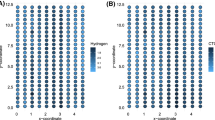Soil pollution data collection typically studies multivariate measurements at sampling locations, e.g., lead, zinc, copper or cadmium levels. With increased collection of such multivariate geostatistical spatial data, there arises the need for flexible explanatory stochastic models. Here, we propose a general constructive approach for building suitable models based upon convolution of covariance functions. We begin with a general theorem which asserts that, under weak conditions, cross convolution of covariance functions provides a valid cross covariance function. We also obtain a result on dependence induced by such convolution. Since, in general, convolution does not provide closed-form integration, we discuss efficient computation.
We then suggest introducing such specification through a Gaussian process to model multivariate spatial random effects within a hierarchical model. We note that modeling spatial random effects in this way is parsimonious relative to say, the linear model of coregionalization. Through a limited simulation, we informally demonstrate that performance for these two specifications appears to be indistinguishable, encouraging the parsimonious choice. Finally, we use the convolved covariance model to analyze a trivariate pollution dataset from California.
Similar content being viewed by others
References
Abramowitz, M., and Stegun, I. A., 1965, Handbook of mathematical functions with formulas, graphs and mathematical tables: Dover, New York, p. 374–379.
Daniels, M., Zhou, Z., and Zou, H., 2004, Conditionally specified space-time models for multivariate processes: submitted.
Diggle, P. J., Tawn, J. A., and Moyeed, R. A., 1998, Model based Geostatistics(with discussion): Appl. Stat., v. 47, no. 3, p. 299–350.
Gaspari, G., and Cohn, S. E., 1999, Construction of correlation functions in two and three dimensions: Q. J. R. Meteorol. Soc., v. 125, p. 723–757.
Gelfand A. E., Kim H. J., Sirmans, C. F., and Banerjee, S. K., 2003, Spatial modeling with spatially varying coefficient processes: J. Am. Stat. Assoc., v. 98, no. 462, p. 387–396.
Gelfand, A. E., Schmidt A. M., Banerjee, S., and Sirmans, C. F., 2004, Nonstationary multivariate process modeling through spatially varying coregionalization (with discussion): Test, v. 13, no. 2, p. 1–50.
Gelfand, A.E., and Vounatsou, P., 2002, Proper multivariate conditional autoregressive models for spatial data analysis: Biostatistics, v. 4, p. 11–25.
Higdon, D. M., 2001, Space and Space-time modeling using process convolutions: Technical reports, 01-03, Duke University, Institute of Statistical and Decision Sciences.
Mardia, K.V., and Goodall, C., 1993, Spatiotemporal analyses of multivariate environmental monitoring data, in Patil, G. P., and Rao, C. R., eds., Multivariate environmental statistics: Elsevier, Amsterdam, p. 347–386.
Myers, D., 1991, Pseudo-cross variograms, positive-definiteness, and co-kriging: Math. Geol., v. 23, no. 6, p. 805–816.
Sain, S., and Cressie, N., 2002, Multivariate lattice models for spatial environmental data: American Statistical Association Proceedings, p. 2820–2825.
Schmidt, A. M., and Gelfand, A. E., 2003, A Bayesian coregionalization approach for multivariate pollutant data: J. Geophys. Res. Atmos., v. 108, no. D24, p. 8783.
Stein, M. L., 1999, Interpolation of spatial data: Some theory for kriging: Springer Verlag, New York, p. 24–25.
Stein, A., and Corsten, L. C. A., 1991, Universal kriging and cokriging as a regression procedure: Biometrics, v. 47, no. 2, p. 575–587.
Ver Hoef, J. M., and Barry, R. P., 1998, Constructing and fitting models for cokriging and multivariate spatial prediction: J. Stat. Plan. Inference, v. 69, no. 2, p. 275–294.
Wackernagel, H., 2003, Multivariate geostatistics: An introduction with applications, 2nd ed.: Springer Verlag, Berlin.
Xie, T., Myers, D. E., and Long A. E., 1995, Fitting matrix-valued variogram models by simultaneous diagonalization (Part I: Theory): Math. Geol., v. 27, no. 7, p. 867–876.
Xie, T., Myers, D. E., and Long A. E., 1995, Fitting matrix-valued variogram models by simultaneous diagonalization (Part II: Application): Math. Geol., v. 27, no. 7, p. 877–888.
Author information
Authors and Affiliations
Corresponding author
Rights and permissions
About this article
Cite this article
Majumdar, A., Gelfand, A.E. Multivariate Spatial Modeling for Geostatistical Data Using Convolved Covariance Functions. Math Geol 39, 225–245 (2007). https://doi.org/10.1007/s11004-006-9072-6
Received:
Accepted:
Published:
Issue Date:
DOI: https://doi.org/10.1007/s11004-006-9072-6




